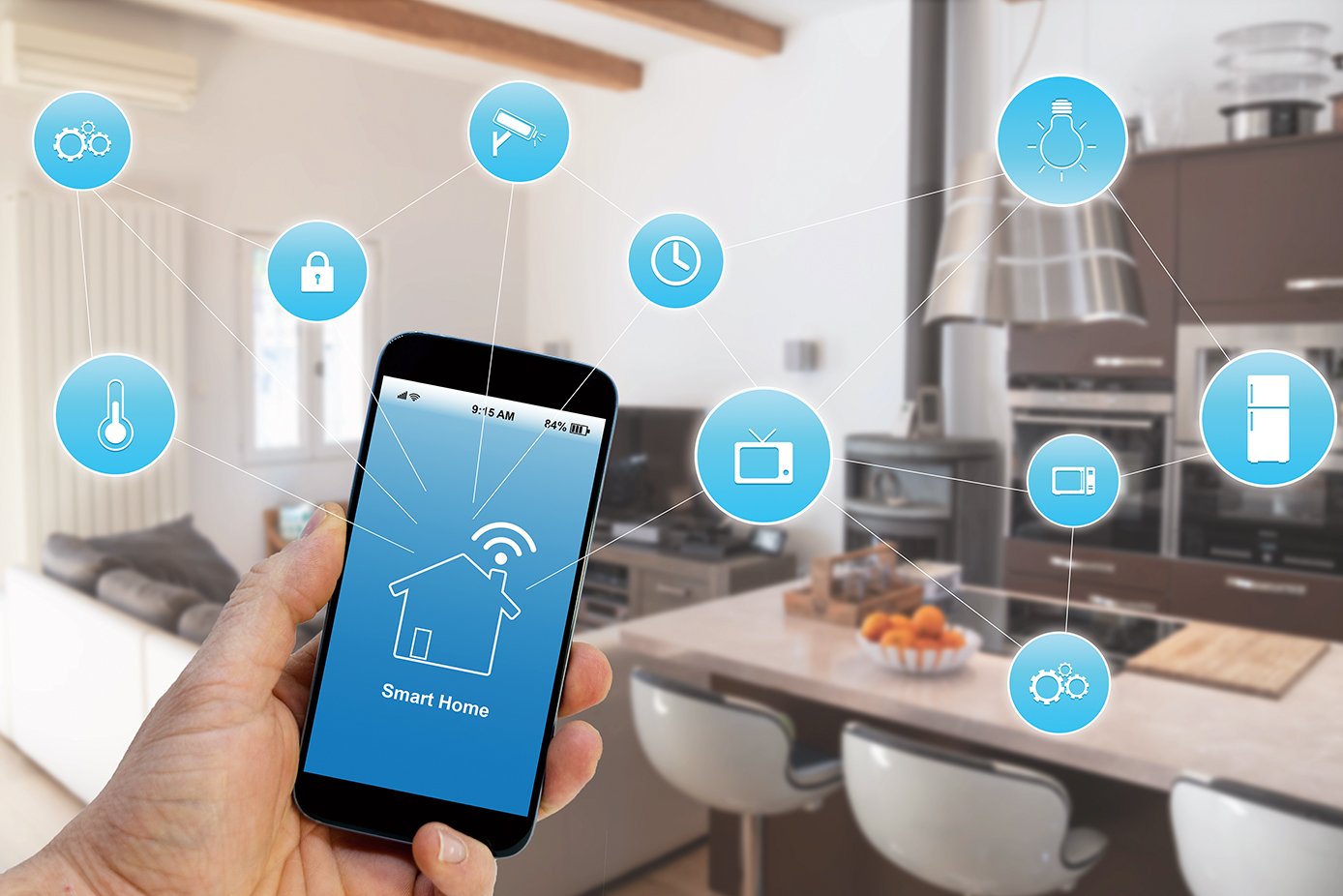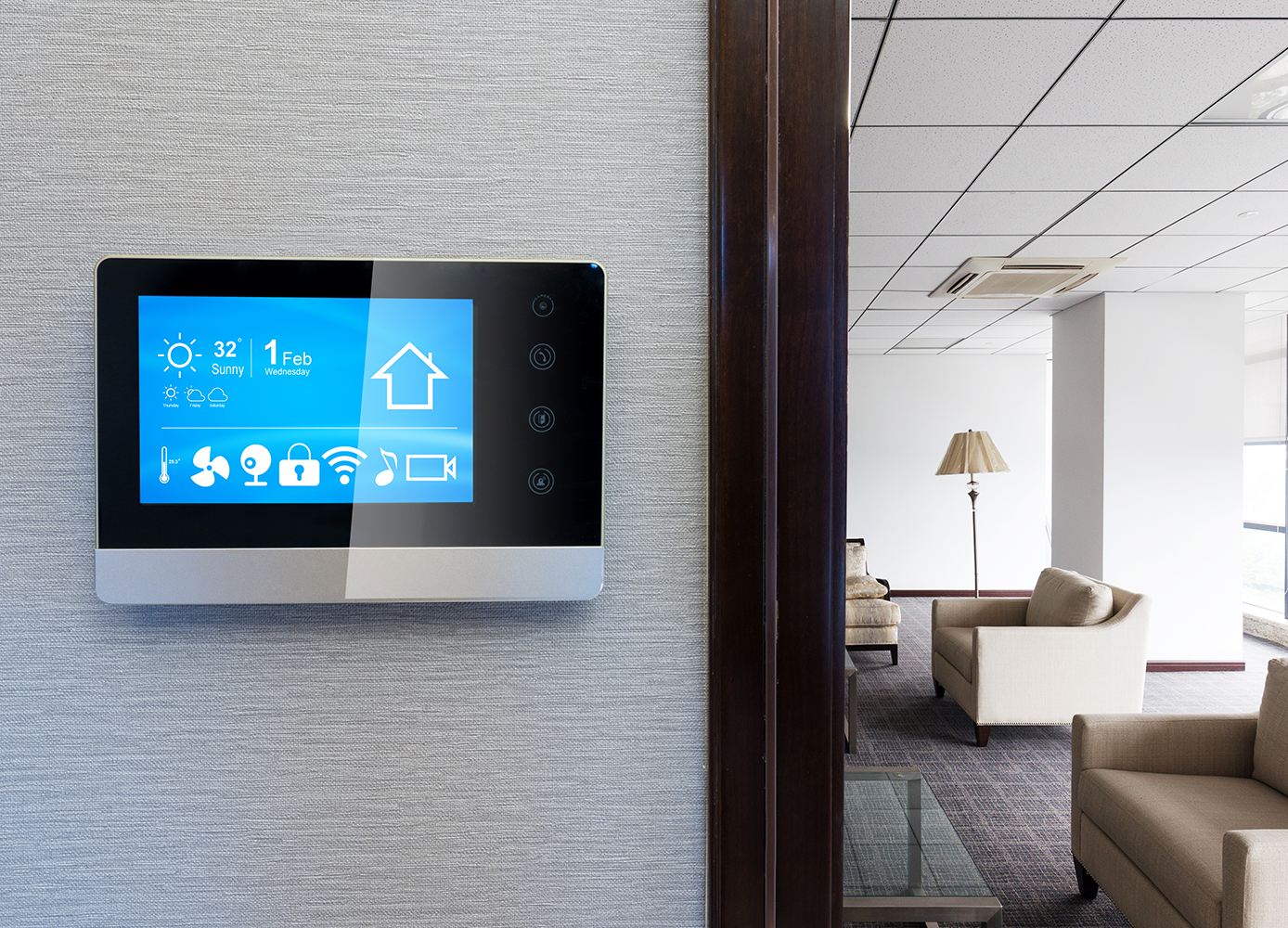When you can control your furnace with your phone, you’ve got a smart home
By Wendy Haaf
No doubt you’ve noticed the term “smart home” being bandied about, but exactly what does it mean? As it turns out, there are a variety of definitions. One popular take is that it’s a home equipped with Internet-connected devices (usually using wireless technology such as Wi-Fi) that can be controlled remotely by a smart phone, computer, or tablet.
“That’s what most people are thinking when they think ‘smart home,’” says Gavin Taylor, a technology consultant with the Information Technology Services department at London Health Sciences Centre and St. Joseph’s Health Care London (ON). “Then there are ‘intelligent’ devices that monitor and track information about you, which is a little bit different.”
The number and type of these gadgets and the tasks they’re capable of performing seem to be proliferating by the day. Here’s a glimpse at some of them.
Environmental Controls
From “smart plugs” that allow you to control an electrical device via an app to lighting systems that can be programmed to turn on and off according to a schedule or daylight levels, there are any number of options for managing the environment in your home.
With a smart thermostat, you can regulate and monitor the temperature in your home remotely, generate energy-use reports, and set reminders for changing your furnace filter. Some are capable of building their own schedules by learning your habits, and others incorporate sensors that detect whether your home is occupied, allowing them to adjust the temperature accordingly.
By cutting down on human error, smart thermostats can help you cut energy use by anywhere from 10 to 23 per cent. Smart water monitors can detect problems such as burst pipes and running toilets soon after they occur and send an alert to your phone.
Security and Home Access
Home security is a rapidly expanding category of smart technology, from locks that you can operate remotely so a family member can get in without a key and cameras that allow you to keep an eye on your front porch from anywhere in the world to entire systems that incorporate motion sensors, smoke and heat detectors,
and video cameras.
Household Appliances
Many household appliances now feature smart technology. If you tend to forget the washing in the machine, you can get a washer that sends your phone an alert when a cycle is finished. Some smart devices have sensors that can remind you when the detergent in the dispenser is running low or tailor water levels to load sizes.
Integrated Systems and Hubs
“Even though we talk about the Internet of Things, many of these devices are not necessarily connected to each other as well as you might think,” says Cheryl Forchuk, the Beryl and Richard Ivey Research Chair in Aging, Mental Health, Rehabilitation and Recovery at the Lawson Health Research Institute and the Parkwood Institute in London, ON. She’s also the lead researcher for a series of pilot projects aimed at using smart-home technology to help people with multiple conditions, including mental illness, monitor and manage their health. “If someone’s got five different devices in the house, they don’t want to have to go to five different web pages for information.”
Some potential solutions for connecting such devices are a home hub, some models of smart TV, and a voice assistant. As yet, however, none of the voice-activated devices meet the security criteria for use in health care, which are orders of magnitude higher than those for most purposes. “Voice-activated devices constantly monitor and record information,” which is stored on US servers, Forchuk explains. Why is that problematic? Thanks to the Patriot Act, the US government can access that information without the user or owner’s consent or knowledge.
Getting expert help is another possibility: some Internet providers offer monthly home security package subscriptions, while other companies sell and install an array of systems and service bundles.
The prototype integrated system that Forchuk and her team have created (which operates behind a hospital firewall) features an à la carte selection of services, starting with secure communication by text or video between users and their primary-care providers, and shared access to data from devices such as scales, blood pressure cuffs, and fitness trackers. Since a change in patterns of activity, sleep, and heart rate can herald a deterioration in health status, this monitoring can facilitate early intervention. Automated medication dispensers can disgorge pill packets on a schedule and even send an alert to a designated person, such as a friend or family member, if the medication isn’t collected from the dispenser within a given period. “The idea is to increase the capacity of the environment with these supports so that more people could either go home from hospital or stay at home,” Forchuk says.
Photo: iStock/Media Raw Stock.
Smart-Home Cybersecurity Tips
Virtually any device connected to your home network can leave you exposed to a cyberattack, and the consequences could be anything from a leaked Wi-Fi password and stolen personal data to the hijacking of cameras, door locks,
and speakers.
“A malicious individual could remotely access smart devices” and make them behave in harmful ways, explains Karthik Pattabiraman, a cybersecurity researcher and an associate professor of electrical and computer engineering at the University of British Columbia in Vancouver.
As yet, however, there are no government standards or third-party certification programs in Canada for smart home devices. So what can you do to protect your privacy?
Pattabiraman and Gavin Taylor, a technology consultant with the Information Technology Services department at London Health Sciences Centre and St. Joseph’s Health Care London (ON), offer the following tips.
• Set up a separate, secondary network on your router solely for smart-home devices.
• Create a separate e-mail account with a generic name that’s used only for configuring these devices.
• Read all the documentation before installing or activating a device. “The documentation will spell out how the data is being used or not used,” Taylor says. Is voice data being erased after a certain period? Could your health data be sold to a third party? These things should be made clear in the agreement.
• Change the manufacturer’s default password before using any device. Ideally, your new password should be 15 characters long and not incorporate any personal information such as your kids’ birthdates. The simplest, most secure way of generating passwords is to use a password manager.
• Set up reminders to periodically change passwords and check the manufacturer’s website for any updates or patches. “There’s no systematic way of updating some of these devices,” Pattabiraman explains.
• “Disable any features you’re not going to use,” Pattabiraman urges, or don’t activate them in the first place.
• Turn off or cover the camera on your smart TV when not in use.
• Choose reputable brands, and before you buy, read product reviews on multiple sites, including that of the vendor you’re considering purchasing from.





